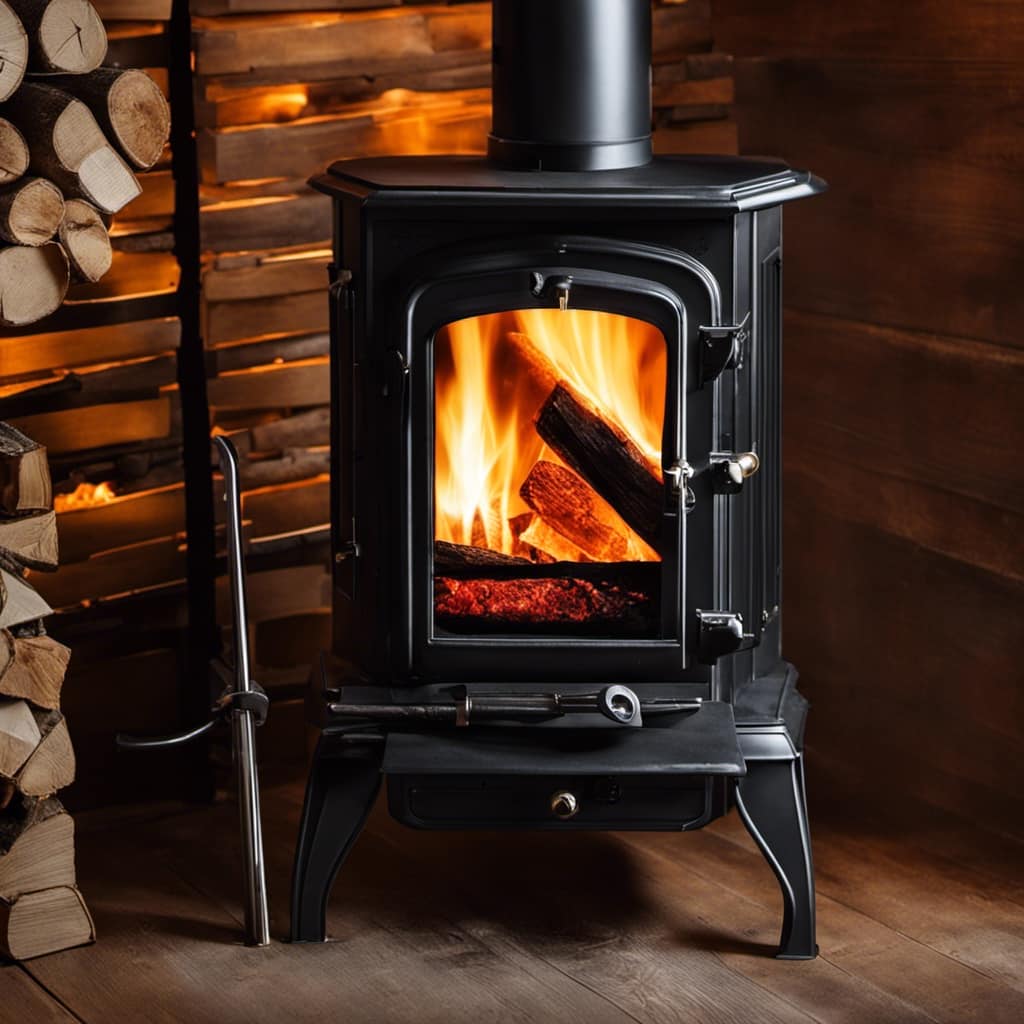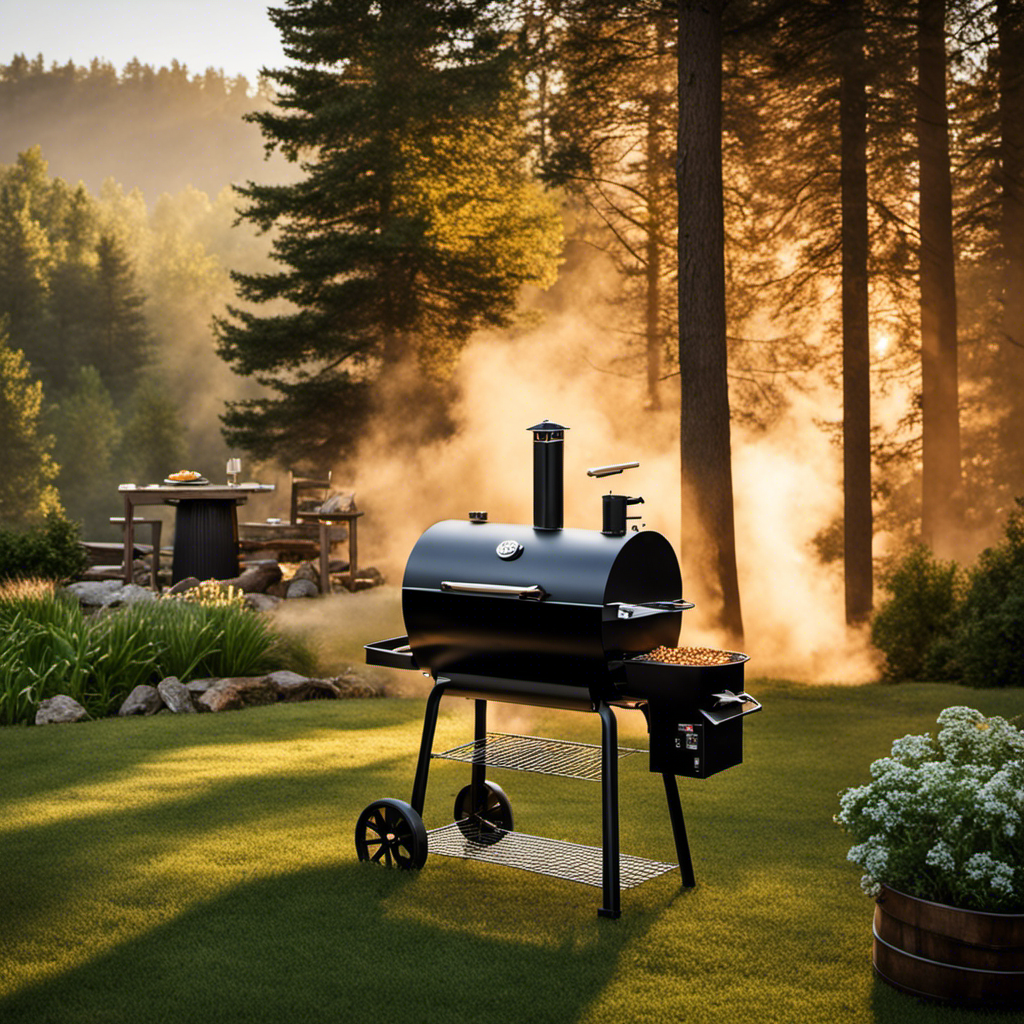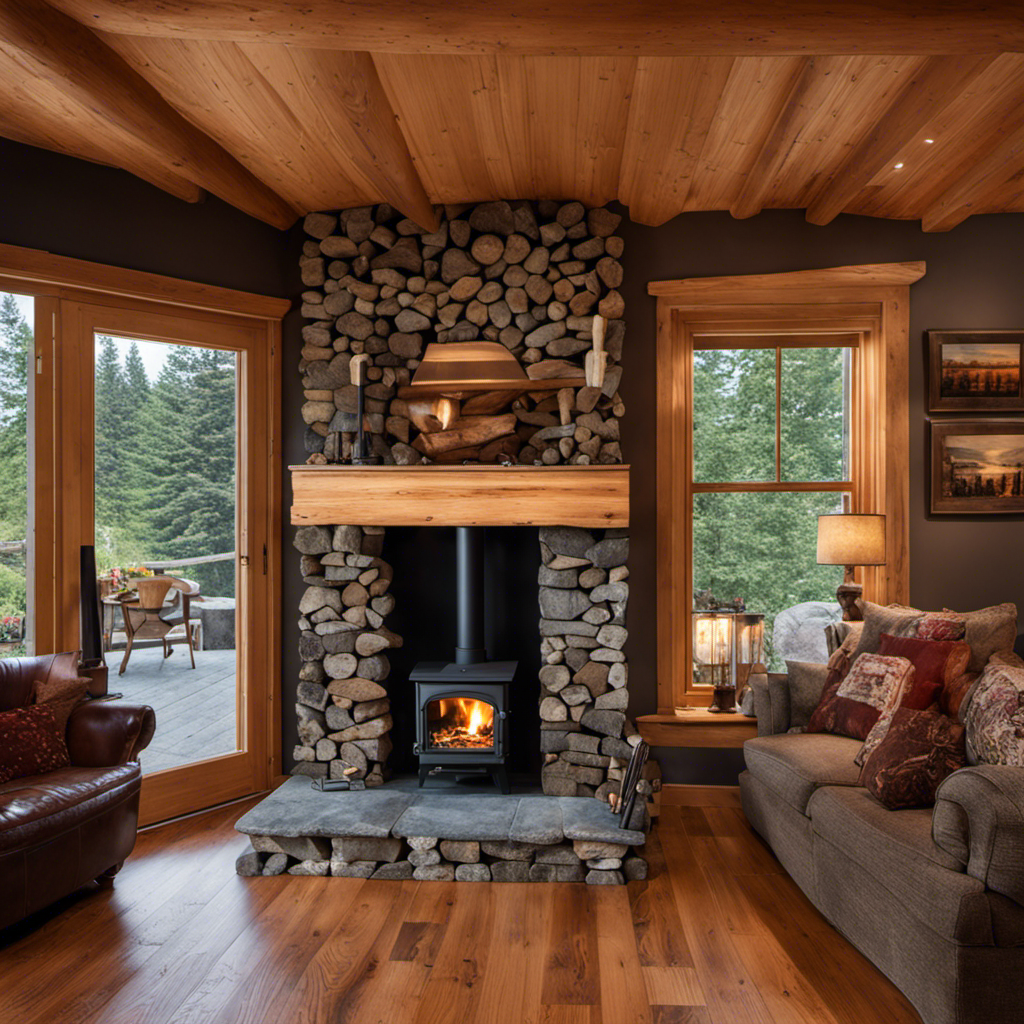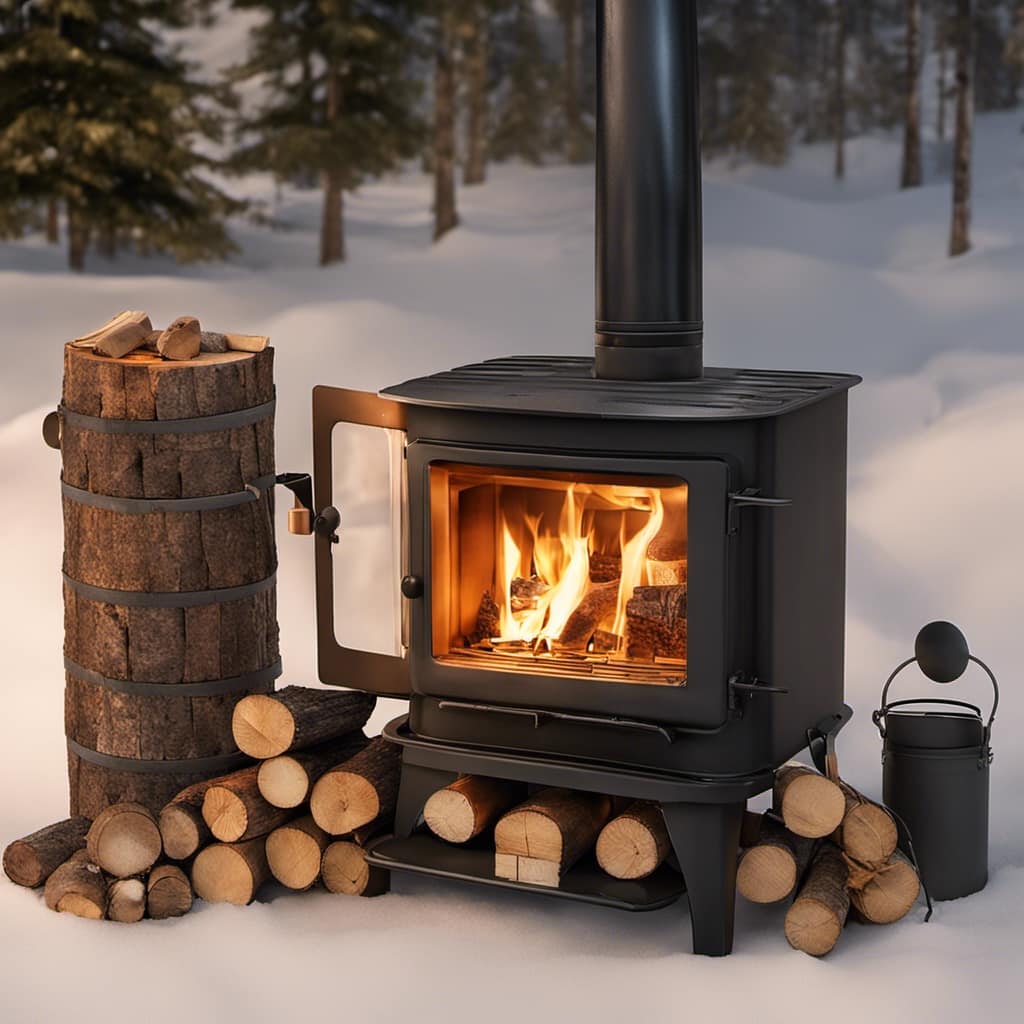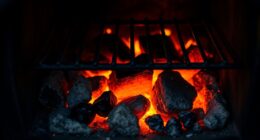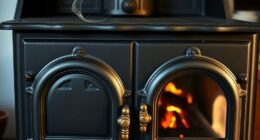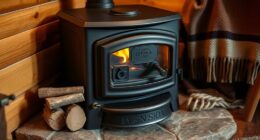
I have always enjoyed the comforting warmth of a wood stove insert, but have been uncertain about the types of materials that are safe to burn in it.
Turns out, the options are quite vast! From traditional firewood to pellets and even alternative fuels, the choices are endless.
In this article, I’ll guide you through the different types of fuel you can use in your wood stove insert, so you can enjoy those crackling fires with peace of mind.
Key Takeaways
- Traditional firewood such as oak, maple, and birch contribute to deforestation and habitat destruction.
- Using seasoned hardwoods in a wood stove insert results in better efficiency, less smoke, and reduced risk of chimney fires.
- Softwoods like pine and fir burn faster and produce more heat, but they create more creosote buildup in the chimney.
- Pellets made from sustainable biomass materials are a clean and efficient alternative, although they may be more expensive and require specific equipment.
Traditional Firewood
I can burn traditional firewood in a wood stove insert.

Traditional firewood, such as oak, maple, or birch, is a popular choice for heating homes during the colder months. These types of firewood are readily available and can provide a steady source of heat.
However, it’s important to consider the sustainable alternatives and environmental impact of using traditional firewood.
Traditional firewood comes from cutting down trees, which contributes to deforestation and habitat destruction. Additionally, burning firewood releases carbon dioxide and other pollutants into the air, contributing to air pollution and climate change.
To minimize the environmental impact, it’s essential to source firewood from sustainably managed forests and properly maintain the wood stove insert to ensure efficient burning and reduced emissions.

Considering sustainable alternatives, such as wood pellets or compressed logs made from recycled materials, can also be a more environmentally-friendly option.
Seasoned Hardwoods
Seasoned hardwoods are my go-to choice for fueling my wood stove insert. They offer several benefits and require proper storage and seasoning. Here are some tips for using seasoned hardwoods in a wood stove insert:
- Longer burn time: Seasoned hardwoods have a lower moisture content, allowing them to burn longer and produce more heat compared to unseasoned firewood.
- Increased efficiency: Dry hardwoods ignite more easily and produce a hotter fire, resulting in better efficiency and less smoke.
- Less creosote buildup: Seasoned hardwoods produce less creosote, reducing the risk of chimney fires and the need for frequent cleaning.
- Cleaner air: Burning seasoned hardwoods produces less smoke and particulate matter, leading to cleaner indoor and outdoor air quality.
To properly store and season firewood, it’s essential to stack it in a well-ventilated area, off the ground, and protected from rain or snow. It should be left to dry for at least six months to a year before use.
Transition: While seasoned hardwoods have their benefits, softwoods also have their advantages when it comes to burning in a wood stove insert.
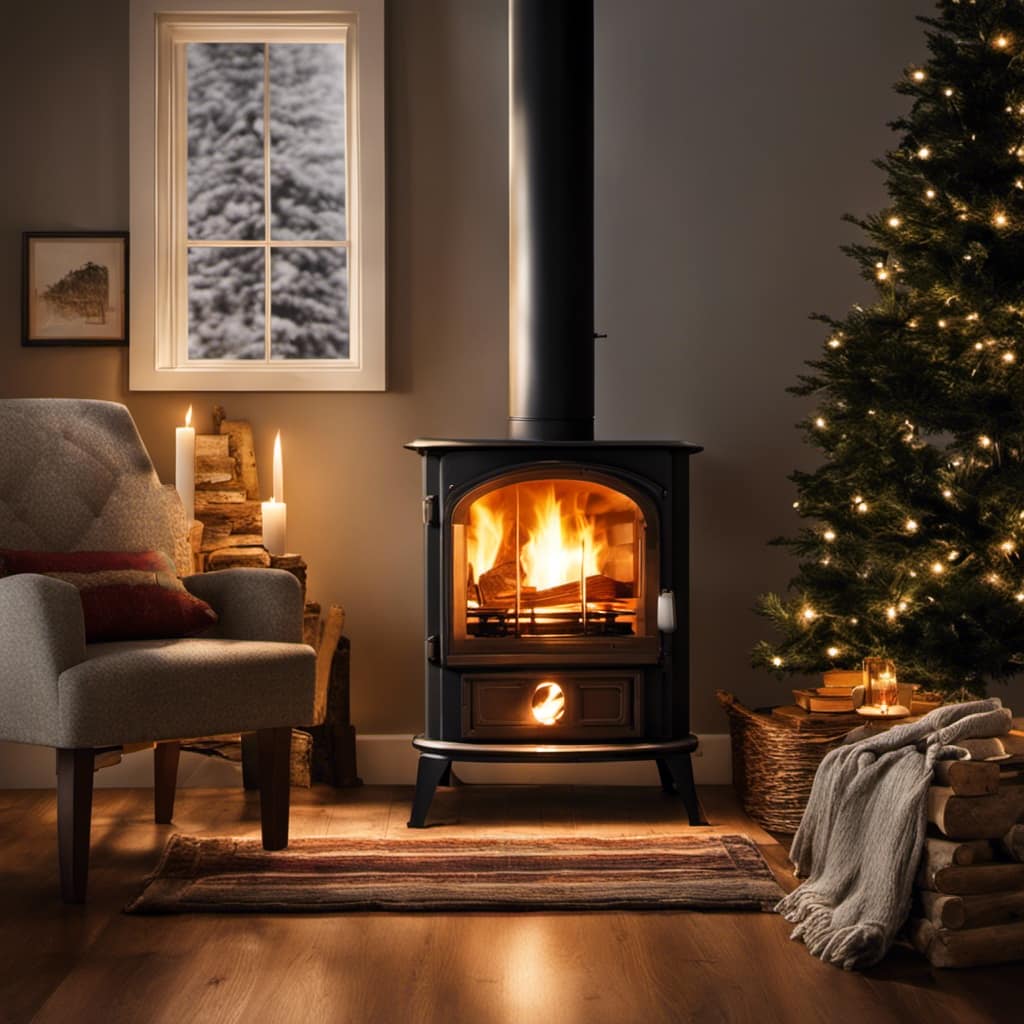
Softwoods
After researching different types of firewood, I’ve learned that softwoods offer their own set of advantages when it comes to heating my home. Softwoods, such as pine and fir, burn faster and produce a higher heat output compared to hardwoods. This makes them ideal for quick and efficient heat, especially during colder months.
However, softwoods also tend to create more creosote buildup in the chimney due to their resinous nature. It’s crucial to regularly clean the chimney and use appropriate chimney liners to prevent any potential fire hazards.
Additionally, the environmental impact of burning softwoods should be taken into account. Softwoods are generally more readily available and grow faster compared to hardwoods, making them a more sustainable option. However, it’s still essential to use responsibly sourced wood to minimize any negative environmental effects.
Overall, softwoods can be a great choice for wood stove inserts, providing efficient heat while considering the environmental impact.

Pellets
Pellets, made from compressed sawdust or other biomass materials, are a convenient and eco-friendly alternative fuel option for heating my home. Here are some advantages and disadvantages of using pellets:
Advantages:
- Efficiency: Pellets have a high energy density, meaning they produce more heat per unit of weight compared to other fuels.
- Clean burning: Pellets emit minimal smoke, ash, and pollutants, making them better for both indoor and outdoor air quality.
- Renewable: Pellets are made from biomass materials, such as waste wood or agricultural residues, which are sustainable and help reduce reliance on fossil fuels.
- Convenience: Pellets are available in compact, uniform sizes and can be easily stored and transported.
Disadvantages:
- Cost: While pellet prices vary, they can sometimes be more expensive than other fuels, depending on availability and demand.
- Equipment: Using pellets requires a pellet stove or a wood stove insert specifically designed for pellet use, which can be an additional expense.
- Maintenance: Pellet stoves require regular cleaning and maintenance, including ash removal and chimney cleaning, to ensure optimal performance.
- Dependency: Using pellets means relying on a steady supply, which may be limited in some areas.
Overall, pellets offer numerous advantages in terms of efficiency, cleanliness, and sustainability. However, it’s important to consider the potential drawbacks and weigh them against your specific needs and circumstances.

Alternative Fuels
Using alternative fuels, such as pellets, is a great way to reduce my carbon footprint and contribute to a cleaner environment. When it comes to biofuel options, there are several sustainable heating alternatives that can be used in wood stove inserts.
One option is wood briquettes, which are made from compressed sawdust and other wood waste materials. These briquettes burn efficiently and produce minimal emissions.
Another option is corn pellets, which are made from dried and compressed corn kernels. Corn pellets are a renewable energy source and provide a clean burn.
Additionally, there are also options like soybeans, sunflower seeds, and cherry pits that can be used as alternative fuels.
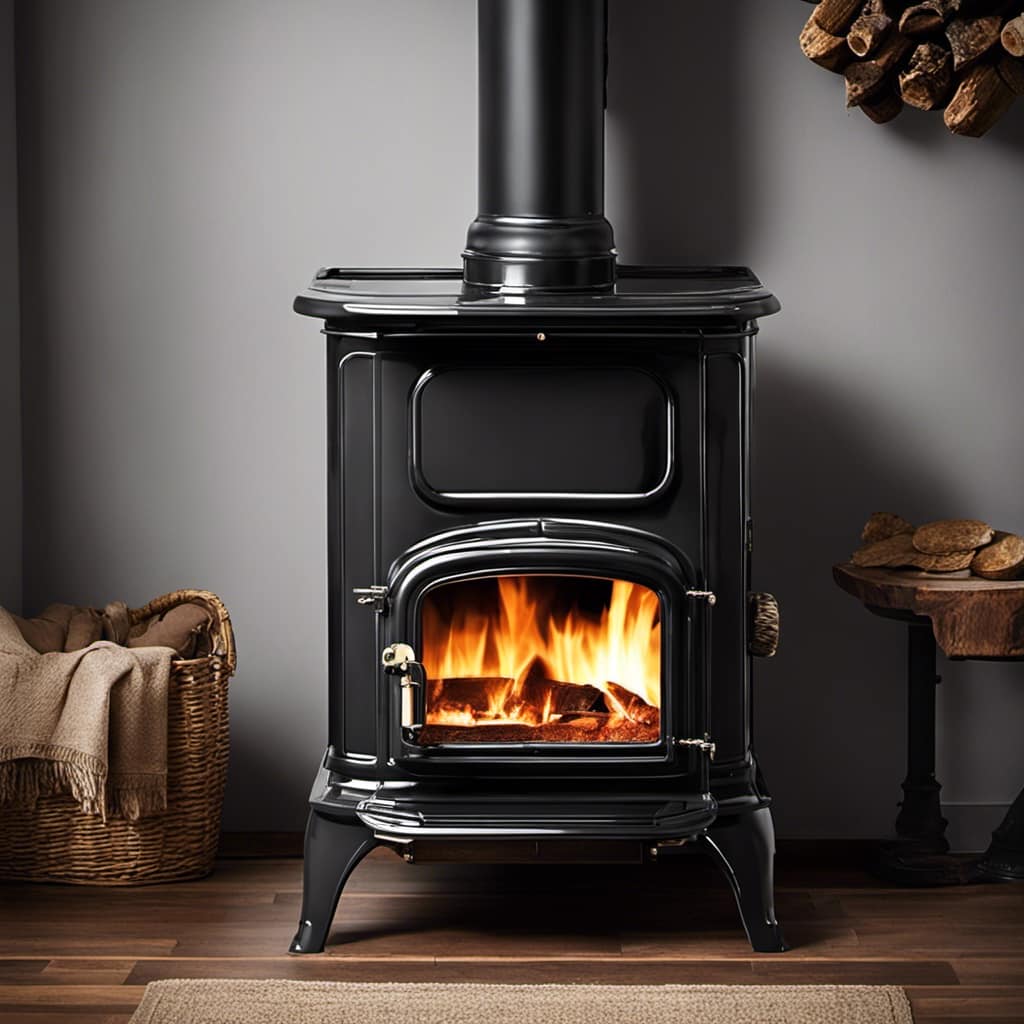
Frequently Asked Questions
Can You Burn Paper or Cardboard in a Wood Stove Insert?
Yes, you can burn paper and cardboard in a wood stove insert. However, it is important to use them as alternative fuel sources sparingly and in moderation to ensure proper airflow and prevent excessive ash buildup.
Is It Safe to Burn Treated or Painted Wood in a Wood Stove Insert?
It is not safe to burn treated or painted wood in a wood stove insert. Burning pressure treated wood releases toxic chemicals, and burning painted wood can release harmful fumes and create a fire hazard.
Can You Burn Coal in a Wood Stove Insert?
Yes, you can burn coal in a wood stove insert. Coal is a popular alternative fuel source for heating. It provides long-lasting heat and is efficient. However, it’s important to follow safety guidelines and ensure proper ventilation.
What Are the Potential Dangers of Burning Unseasoned Wood in a Wood Stove Insert?
Burning unseasoned wood in a wood stove insert can pose potential dangers. The high moisture content leads to inefficient combustion, increased creosote buildup, and increased risk of chimney fires. Additionally, it releases more pollutants, contributing to health hazards.
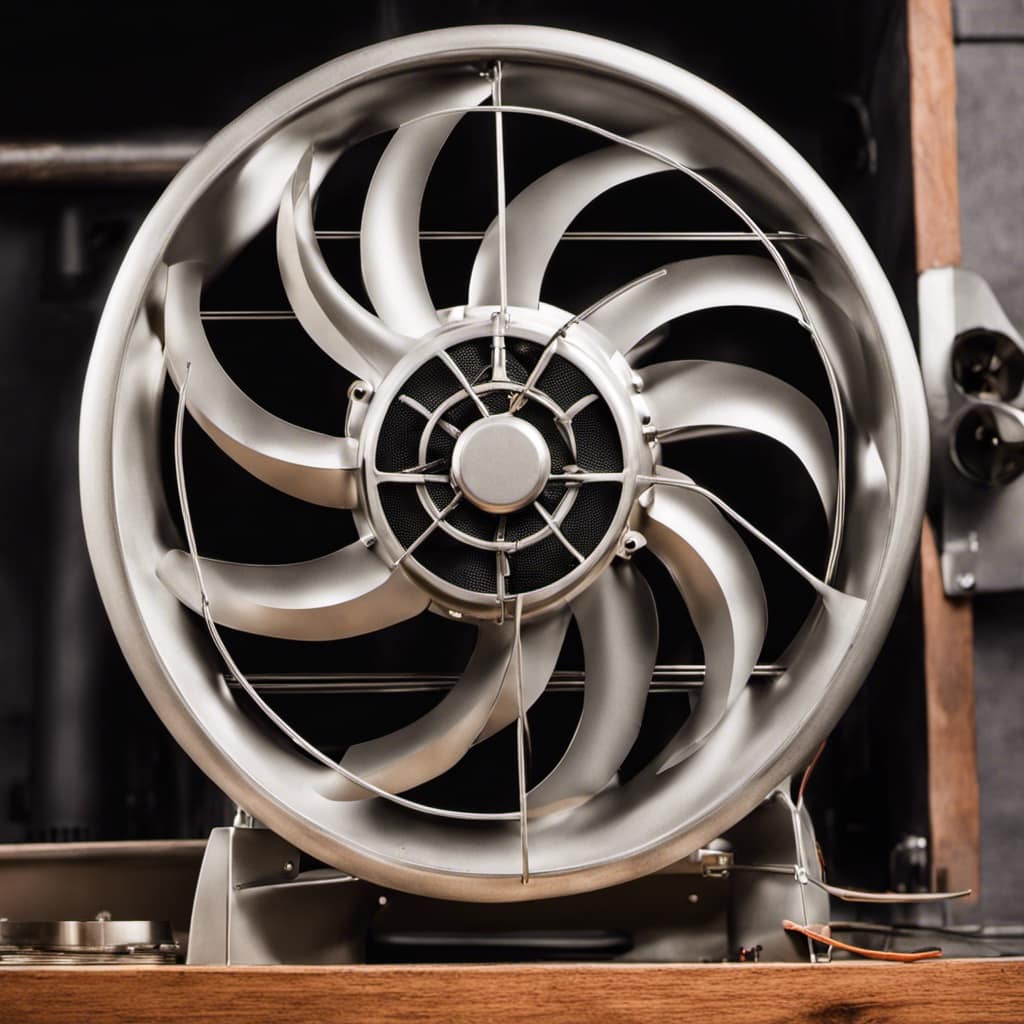
Are There Any Specific Guidelines or Regulations Regarding the Types of Fuels That Can Be Burned in a Wood Stove Insert?
There are regulations on the types of fuels that can be burned in a wood stove insert. It is important to use seasoned wood for better efficiency and to avoid potential dangers.
Conclusion
As the flames dance and the warmth radiates from the wood stove insert, it becomes clear that the choices we make in fueling our fire can have a deeper meaning.
Each piece of traditional firewood, seasoned hardwood, softwood, pellet, or alternative fuel represents not only a source of heat but also a connection to nature and a commitment to sustainable living.
By carefully selecting and burning these fuels, we honor the power of nature and create a cozy sanctuary in our homes.

Growing up surrounded by the vast beauty of nature, Sierra was always drawn to the call of the wild. While others sought the comfort of the familiar, she ventured out, embracing the unpredictable and finding stories in the heartbeat of nature.
At the epicenter of every remarkable venture lies a dynamic team—a fusion of diverse talents, visions, and passions. The essence of Best Small Wood Stoves is crafted and refined by such a trio: Sierra, Logan, and Terra. Their collective expertise has transformed the platform into a leading authority on small wood stoves, radiating warmth and knowledge in equal measure.


